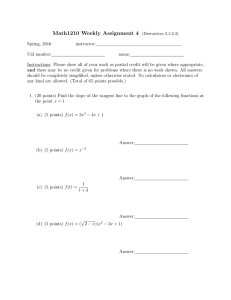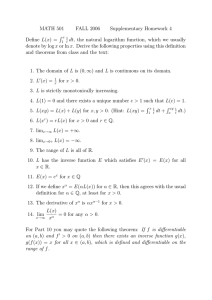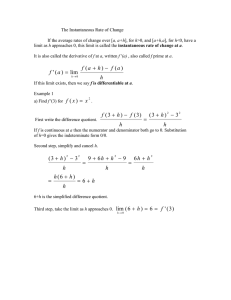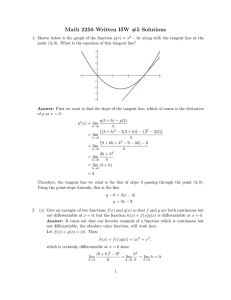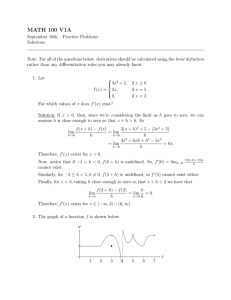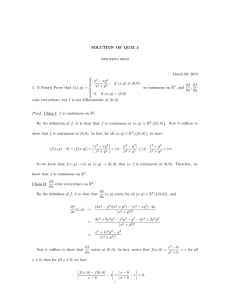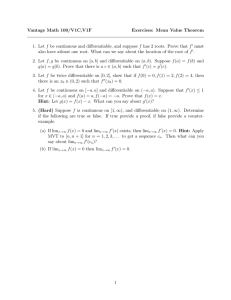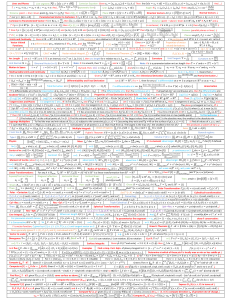MATH 184 Differentiable Functions are Locally Linear
advertisement
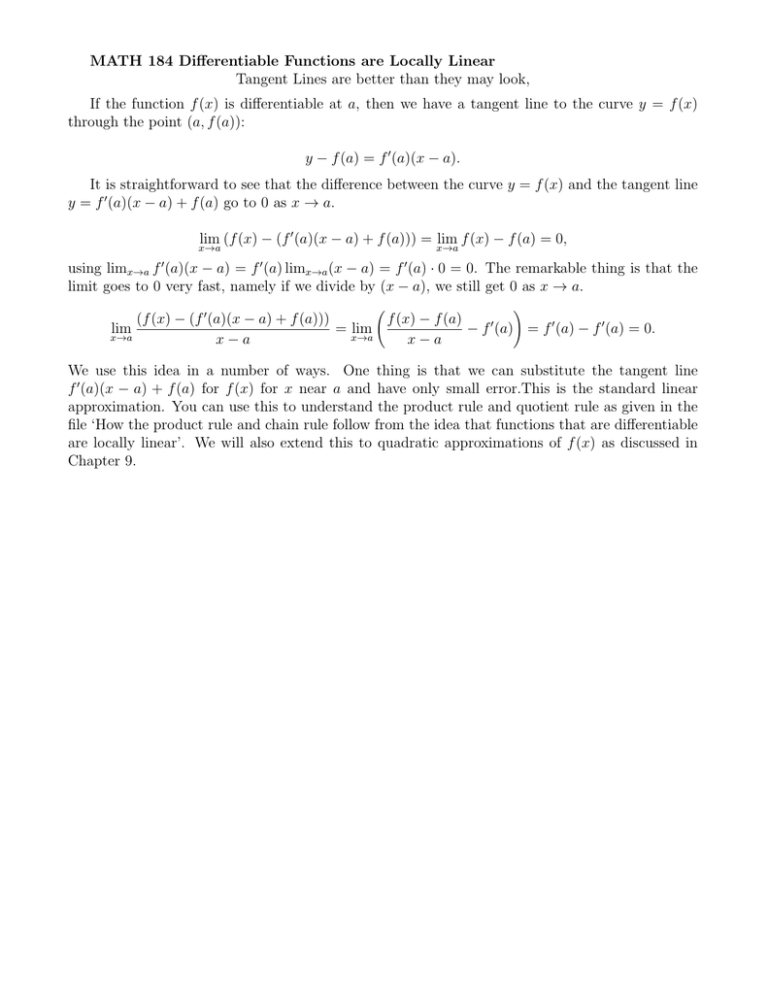
MATH 184 Differentiable Functions are Locally Linear Tangent Lines are better than they may look, If the function f (x) is differentiable at a, then we have a tangent line to the curve y = f (x) through the point (a, f (a)): y − f (a) = f 0 (a)(x − a). It is straightforward to see that the difference between the curve y = f (x) and the tangent line y = f 0 (a)(x − a) + f (a) go to 0 as x → a. lim (f (x) − (f 0 (a)(x − a) + f (a))) = x→a lim f (x) − f (a) = 0, x→a using limx→a f 0 (a)(x − a) = f 0 (a) limx→a (x − a) = f 0 (a) · 0 = 0. The remarkable thing is that the limit goes to 0 very fast, namely if we divide by (x − a), we still get 0 as x → a. f (x) − f (a) (f (x) − (f 0 (a)(x − a) + f (a))) = x→a lim − f 0 (a) = f 0 (a) − f 0 (a) = 0. lim x→a x−a x−a ! We use this idea in a number of ways. One thing is that we can substitute the tangent line f 0 (a)(x − a) + f (a) for f (x) for x near a and have only small error.This is the standard linear approximation. You can use this to understand the product rule and quotient rule as given in the file ‘How the product rule and chain rule follow from the idea that functions that are differentiable are locally linear’. We will also extend this to quadratic approximations of f (x) as discussed in Chapter 9.
